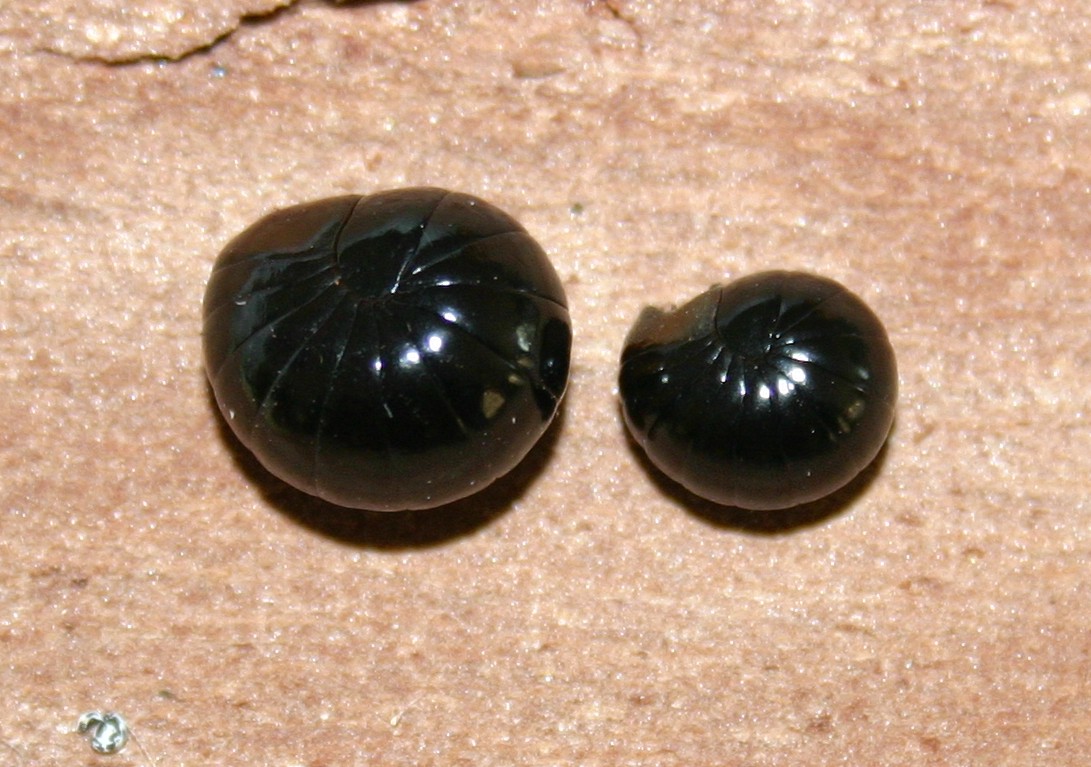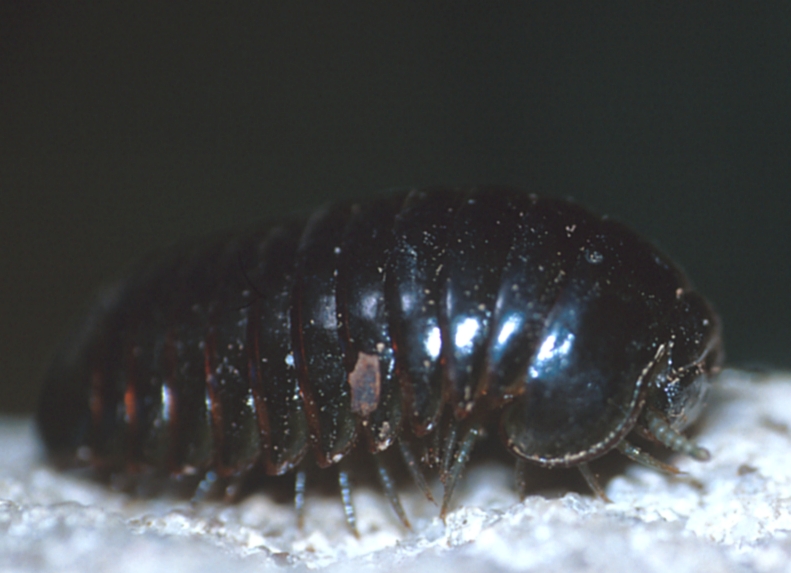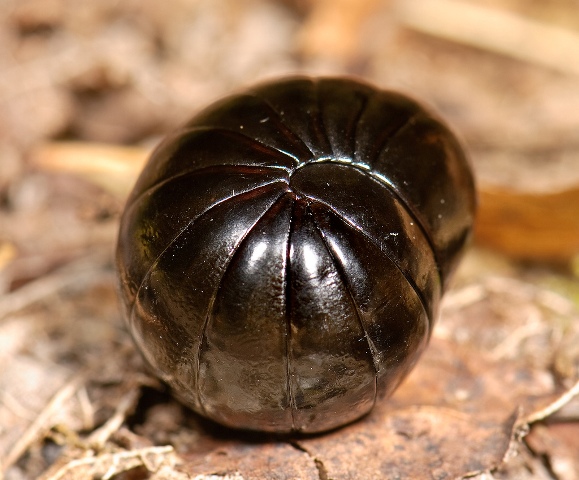Phylum Arthropoda
Subphylum Myriapoda
Class Diplopoda
Order Sphaerotheriida
Common names: giant pill millipedes
Overview
Giant pill millipedes are named for their ability to roll into a spherical ball as a defence mechanism when disturbed. Like pill millipedes (Glomerida), giant pill millipedes have 11 to 13 body segments, however, they are considerably larger than their northern hemisphere relatives. There are 21 leg-pairs in the female and 23 in the male. The last pair of appendages in males is modified into structures called telopods that either directly transfer the spermatophore to the female�s openings or function to clasp females during mating. Aspects of the configurations of the telopods constitute the primary taxonomic characters at the generic and specific levels. Pill millipedes possess large compound eyes and short, stout antennae. They attain a maximum length of 3 to 4 cm and are extremely stoutly built, in contrast with most other millipedes, which are long and slender.
Distribution and diversity
The Order Sphaerotheriida is known from the Southern Hemisphere and has been recorded in southern Africa and Madagascar, India, Southeast Asia, Australia and New Zealand. There are 330 species described worldwide and 23 species in Australia.
Life cycle
Giant pill millipedes have only rarely been observed mating, and the males of some species are known to produce spermatophores. In these cases, the spermatophore is produced in front of the female and then passed to the highly modified posterior legs of the male. The spermatophore is manipulated by the male, with his posterior legs, into the female gonopore. Eggs are coated in faecal matter and deposited randomly in leaf litter. Juveniles initially possess three pairs of legs, and often five rudimentary ones, and additional legs are added and become fully developed over successive moults.
Feeding
Giant pill millipedes are herbivorous and consume a variety of different vegetation types, including decomposing leaves, bark, moss and lichen. Some species are arboreal and feed on live plant matter.
Ecology
Giant pill millipedes are found in moist forests normally under logs, in deep, rich leaf litter and have been found in the old nest of brush turkeys. Tasmanian species in the genus Procyliosoma are surface-active at night in wet forest and can be found sometimes in trees. During the daytime they prefer sheltering in richly organic humus, and can be found under stones and on the floor of long-unburned forest.

Cynotelopus sp.
Image credit: Photographer: Mark Harvey
� Western Australian Museum

Spaherotheriida, Mount Glorious, Queensland
Image credit: Photographer: E.S. Volschenk
� Western Australian Museum









